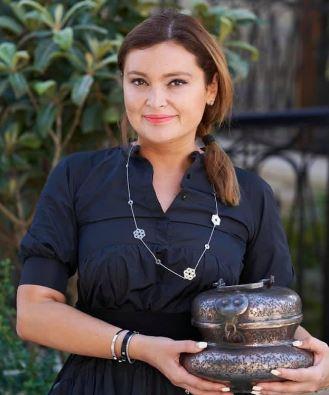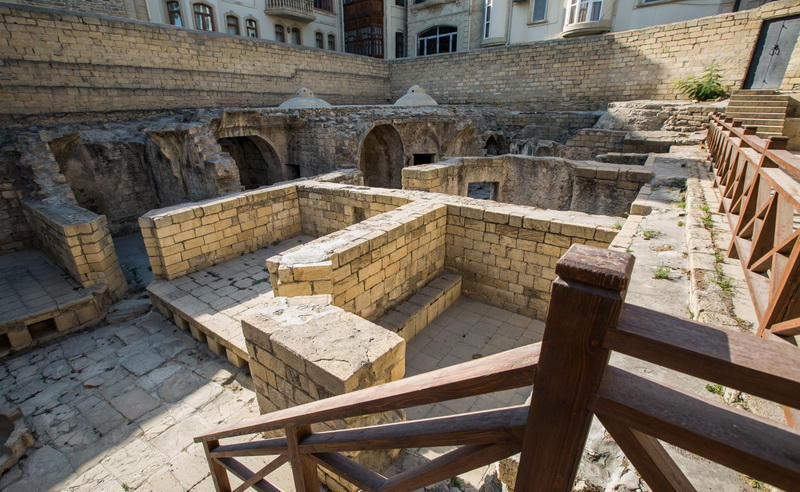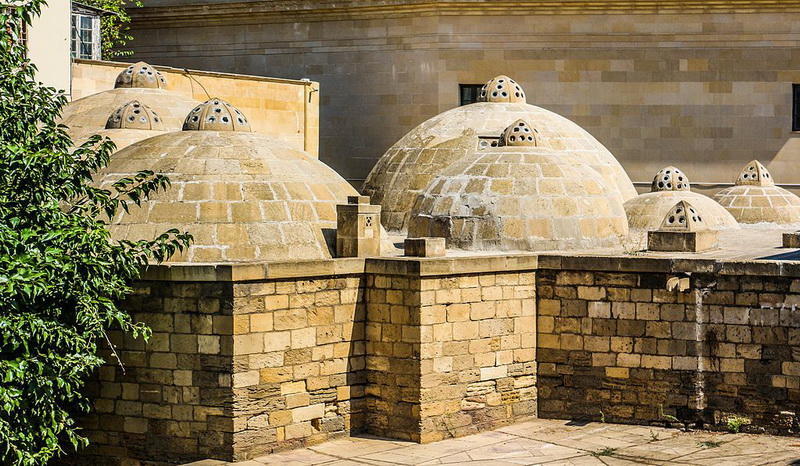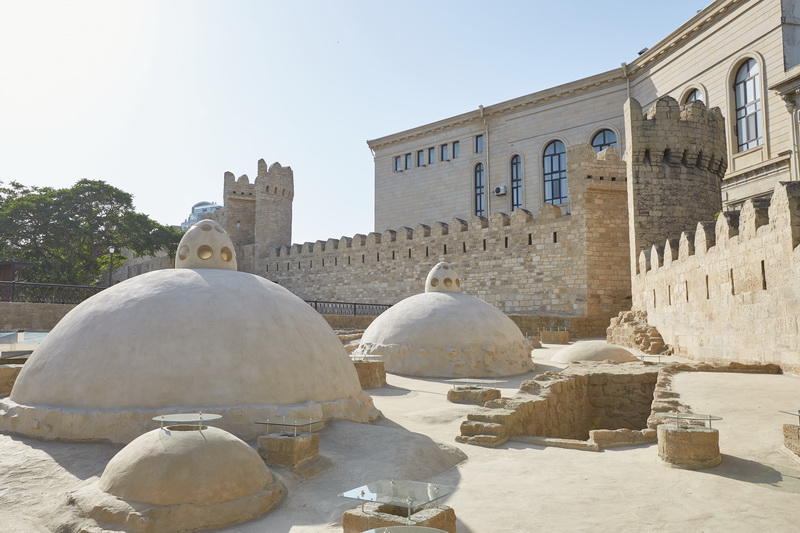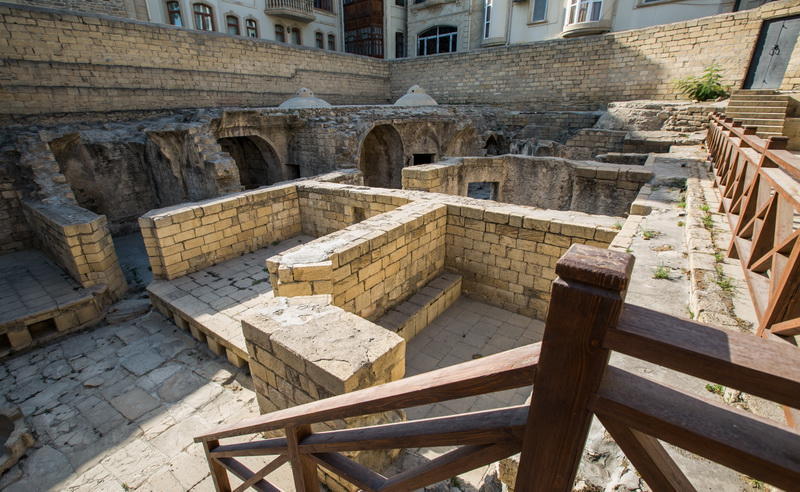Inside Baku's Old City [INTERVIEW]
![Inside Baku's Old City [INTERVIEW]](https://www.azernews.az/media/2020/07/10/107085004_1175418259476847_7277278979477826535_n.jpg)
By Laman Ismayilova
With its breathtaking and incredible historical sites, Icherisheher is a dazzling destination that wow all who visit.
Numerous unique monuments, including the Shirvanshahs Palace complex, mosques and minarets, the ruins of caravanserais and bathhouses make this place one of the most popular tourist attractions in the city.
Restoration and conservation works are currently carried out in the Icherisheher State Historical and Architectural Reserve with the support of the Heydar Aliyev Foundation.
On 29 June 2020, President of Azerbaijan Mr. Ilham Aliyev and First Lady Mehriban Aliyeva familiarized themselves with restoration and conservation work carried out in Icherisheher, and participated in the opening of the park area of the Baku Khan’s Palace Complex and the 17th century Underground Bathhouse.
In her interview with Azernews, director of Icherisheher Museum Center, PhD. in Art History Amina Melikova provided insight into the restoration works carried out in the Reserve.
"The Icherisheher Museum Center, created in 2018 as part of the Office of the Icherisheher State Historical and Architectural Reserve, includes historical monuments and museums: the Shirvanshah’s Palace Complex (12th-15th centuries); Maiden Tower; the Bey Mosque; the Sirataghli Khanegah; the republic’s first House of Photography; as well as the Gala State Historical and Ethnographic Reserve. To these there is now added an exciting new exposition - a unique example of our architectural and historical heritage - an Underground Bathhouse from the 17th century, discovered in 2016 by archaeological excavations near the Double Gates," said Melikova.
"From 2018-2019, the site was cleared of a layer of earth and the well-known Austrian company Atelier Erich Pummer GmbH was involved in work to strengthen, restore and preserve the bathhouse. In fact, its domes were restored with original material, stones that were found in the area. This was done to preserve the interior from atmospheric precipitation and sunlight," she added.
The director of Icherisheher Museum Center stressed that the place where the Palace of the Baku Khans stood was not developed until the 1750s, but the bathhouse belongs to an earlier period, the 17th century. They were used for its intended purpose until 1806, and after the annexation of the Baku Khanate into the Russian Empire in that year, the bath’s domes were demolished and the holes filled with earth. A military commandant’s office was built over the bathhouse.
Like all eastern bathhouses, this one was built partly underground. Its construction and architecture is similar to others on the Absheron Peninsula that date from the 12th-19th centuries.
"We believe that there may be references to this bathhouse from the 17th century. Evliya Chelebi, the famous Turkish traveller, visited Baku in 1646, and wrote in his book Seyahetnameh (the original is held in the Topkapi Museum, Istanbul) that “a large city located on the Caspian Sea represents a well-maintained city with up to a thousand houses, gardens, mosques, yards, bathhouses, a covered market and a bazaar. There are several large bathhouses, and one of these, the underground bathhouse at the gates, has the most pleasant water." It is possible that Chelebi was referring to this bathhouse," said Melikova.
In eastern Muslim countries the bathhouse (hamam in Azerbaijani) has always been a place of ritual. There were no fewer hamams than mosques, and in the old city every quarter had its own. They were often named after its builder or manager, and have always been very profitable businesses. Nowadays, there are six bathhouses in Icherisheher: the Agha Mikayil, the Agha Zeynal, the Gasimbey, the Haji Banu, the Shah Hamam and the Underground Bathhouse. To have so many is not surprising: a mosque serves to cleanse the soul, and a bath to cleanse the body, which is no less important. There is even a hadith that says: Purity is half the faith.
As well as a place of purification, the bathhouse was also a meeting place, a cultural centre, a kind of social club. Men made deals there, and met with friends. But there was something special about women and the bathhouse. On a women's day, a red fita (cloth) was hung on the door and men knew it was women's bathing day - Zenen Hamami. Women came here for social communication, as they did for weddings and funerals. It was a place to meet each other, share secrets, smoke a hookah, discuss the city’s latest events, the latest fashions, exchange recipes, talk cosmetics, scout for brides for their sons, and of course, show off a new dress or bright kelaghayi and display their jewellery. All this brought in a special hamam chest to hold their valuables. It was akin to a day out.
In Baku, bathhouses were also immensely popular because in such a hot climate it is simply not possible to go without a regular cleansing. In fact, they were not only a treatment, they also warded off diseases: a hamam’s environment, with steam and moderate temperature, has ideal therapeutic and cosmetic effects on the human body.
Bathhouse culture has preserved the ancient traditions of the Azerbaijani people.
Internally, the bathhouse had six sections: the dehliz (corridor), a cloakroom or reception room; a common bathroom with a pool; helveti rooms with private baths; a cleansing room and a boiler room. The cloakroom floors were covered first with straw mats and then with carpets; this is where visitors left their clothes. People also mingled here after bathing to talk and relax. The cloakroom and cleansing rooms were next to each other, connected by the dehliz corridor. There were also small rooms where the jumadar (attendant) wiped customers down, rinsed their feet, smoothed them with incense and helped them dress. Khazna pools with hot and cold water adjoined the common bathroom, while the private corner rooms were for individual bathing and procedures (massage, henna hair colouring etc.) Under the hot water pool was the kulkhan (stokehold), heating the water in a boiler, the stoker adding cold water to regulate temperature and flow. A water tub was filled from the tank with the help of certain pumping devices and this hamam had the largest reservoir in the old city. The bathing section was heated by underfloor channels - there was a complex system of ceramic pipes under the floors and in the walls. From established rites and traditions, it appears that the architects of the 17th-19th centuries met well the requirements of their times. The large number of bathhouses in the city and the continued enjoyment of bathing rituals confirms people’s respect for the traditions of the past, as well as the high level of culture in the city of those times.
This bathing culture was touched on in many eastern works of art. For example, the celebrated painter Kemal ud-Din Behzad portrayed Caliph Harun al-Rashid in a bathhouse in a miniature illustrating Nizami’s Khamsa. It is impossible not to mention here Azim Azimzade, the founder of satirical graphics in Azerbaijan, and his amazingly accurate 1930s portrayal of the mood in a women's bath. Alekper Rzaguliyev’s Characteristics of Old Baku series also merits special attention; of course, the bath is featured there too. The ethnographer, photographer and collector Dmitri Ermakov, a founder of the more modern art of photography in the Caucasus, took a series of photographs of Azerbaijani bathhouse attendants. A great favourite of Azerbaijani cinema is O Olmasin Bu Olsun (If Not This One, Then That One), especially for its hugely entertaining scene in a bathhouse, adapted from the play by the immortal Uzeyir Hajibeyov. A detailed description of the women's bathhouse illumines Maqsud Ibrahimbeyov’s story There Was Never a Better Brother. Aziza Jafarzade’s novel, I Have My Word All Over the World has a startling episode in a bathhouse in which women give a beating to one of their friends with wet cloths. These are just some of the many literary works that pay homage to Azerbaijan’s bathing culture.
The 17th century Underground Bath is within the Baku Khan’s Palace complex. The palace, an architectural monument of the 18th century, is to be found in Icherisheher to the left of the Double Gates as you enter. Following the death of the Iranian shah Nadir Shah Afshar in 1747, his troops left Baku and the Baku noble Mirza Muhammad Khan (1747-1768) declared himself the independent Baku Khan and annexed 39 more Absheron villages to the khanate. The Baku Khan’s Palace complex that Mirza Muhammed Khan built in 1750, was the residence for all subsequent rulers. From 1806, after the annexation of the Baku khanate into the Russian Empire, part of the complex was used as a military commandant’s office, while the other part was lived in by local people.
Conservation and restoration work began on the complex in September 2018. The complex is regarded as a most valuable material legacy of the khanate period and this was a principal factor in the decision to create a new museum that will present the history of old Baku in a modern, dynamic and digital form.
The process of creating a new museum exposition for the Baku Khan’s Palace is now underway to a concept developed by the Belgian company Alfavision, Europe’s leading company in museum design. The opening of the museum is planned for the next year.
The Baku Khan’s Palace Museum will include audio guides, thematic rooms, a feature-length historical film and virtual reality. The museum is an invaluable historical experience; visitors will be able to travel through the history of Baku from the 15th century onwards.
"I believe that both the 17th century bathhouse and the Baku Khan’s Palace Complex are unique monuments of the history of our city and our people. In Icherisheher our past comes to life in every stone. We must know, cherish and promote our history in order to look confidently into the future!," said Melikova.
---
Laman Ismayilova is AzerNews’ staff journalist, follow her on Twitter: @Lam_Ismayilova
Follow us on Twitter @AzerNewsAz
Here we are to serve you with news right now. It does not cost much, but worth your attention.
Choose to support open, independent, quality journalism and subscribe on a monthly basis.
By subscribing to our online newspaper, you can have full digital access to all news, analysis, and much more.
You can also follow AzerNEWS on Twitter @AzerNewsAz or Facebook @AzerNewsNewspaper
Thank you!

